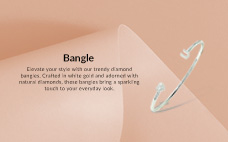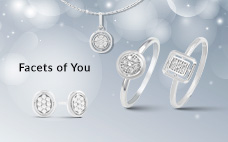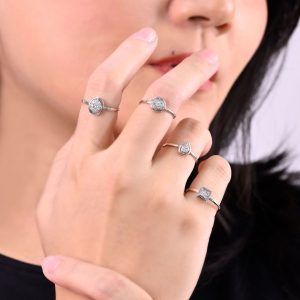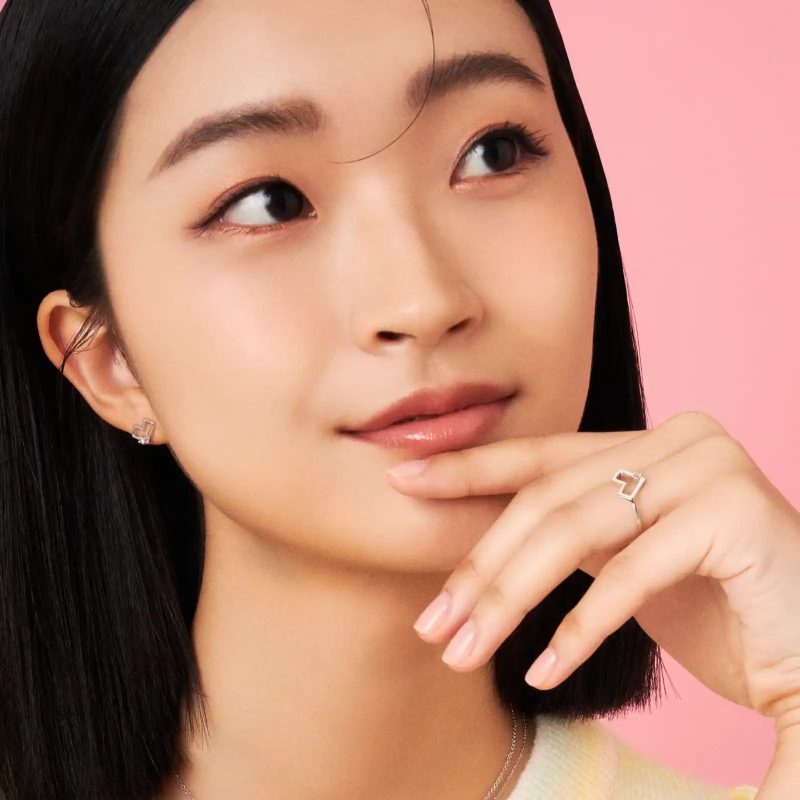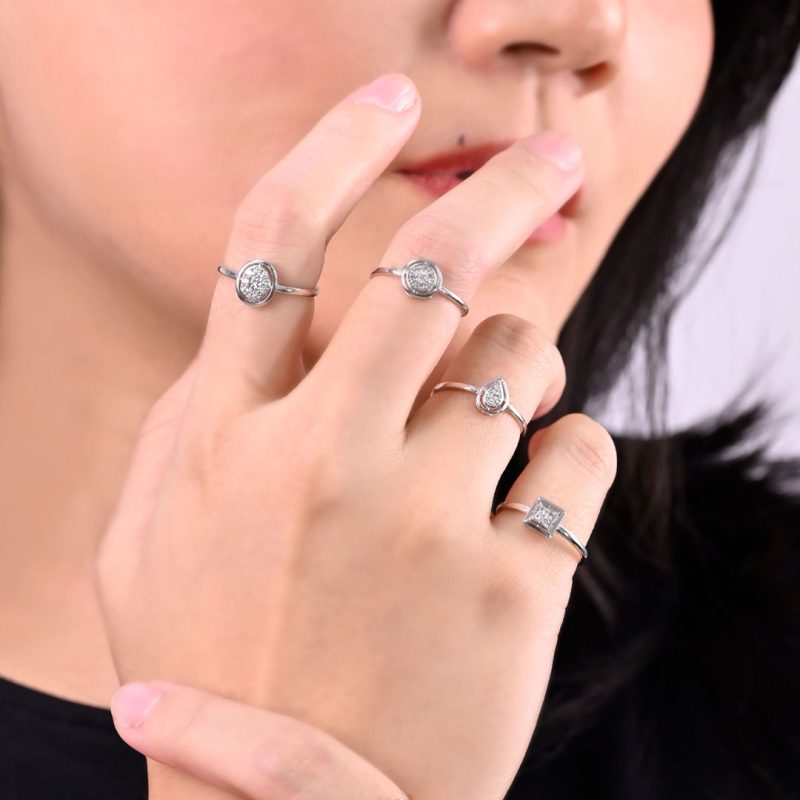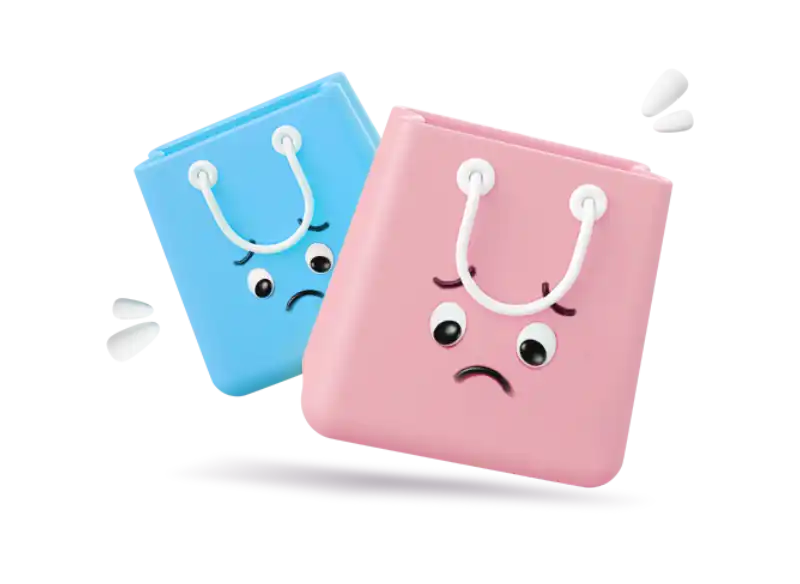Understanding the different types of diamond cuts is one of the most essential steps when buying diamond jewelry. Whether you are shopping for an engagement ring or a custom pendant, the cut of a diamond directly influences how much it sparkles, how large it looks, and how well it complements your personal style.
This guide explores the most popular diamond cuts available today, how they differ in appearance and performance, and how to choose the best one for your needs.
What Does “Type of Diamond Cut” Mean?
In the diamond industry, “cut” can refer to both the shape of the diamond (such as round, oval, or princess) and the precision of how the stone is faceted. While cut quality influences how well a diamond reflects light, this article focuses specifically on diamond shapes—the visual outline of the stone as viewed from the top.
Each diamond cut is engineered to achieve a balance between brilliance (white light reflection), fire (rainbow light dispersion), and scintillation (sparkle when the diamond moves). The type of cut you choose will also affect how large the diamond appears, even if it shares the same carat weight as another shape.
Round Brilliant Cut
The round brilliant cut is by far the most popular diamond shape worldwide. Designed with 57 or 58 facets, it is engineered for optimal light performance and offers the highest level of brilliance among all cuts. Because of its symmetry and sparkle, round diamonds are often the first choice for engagement rings.
This cut suits almost all hand shapes and ring settings, which adds to its universal appeal. However, due to high demand and the amount of raw material lost during cutting, round brilliant diamonds often cost more per carat than other shapes.
Princess Cut
The princess cut is a square-shaped diamond with sharp corners and a modern, angular look. It is the most popular fancy shape and is known for its excellent brilliance, second only to the round brilliant cut.
Princess cut diamonds maximize carat weight efficiency because they use more of the original rough stone, making them a cost-effective option for buyers who want a bold, contemporary look without sacrificing sparkle.
Cushion Cut
The cushion cut has a square or rectangular shape with softly rounded corners, resembling a pillow—hence the name. It combines a vintage feel with modern brilliance, often featuring larger facets that create a romantic, classic look.
This cut has experienced a resurgence in recent years, particularly among buyers who appreciate antique-style jewelry or softer silhouettes. While it may not reflect as much white light as a round diamond, it offers more fire and is often preferred for its warm, glowing appearance.
Oval Cut
The oval cut is an elongated version of the round brilliant, offering similar sparkle but with a more unique silhouette. Its stretched shape creates the illusion of longer fingers and often appears larger than a round diamond of the same carat weight.
Because of its flattering proportions and high brilliance, the oval cut has become increasingly popular for engagement rings in Malaysia and beyond. It also hides inclusions and color tints well, making it a practical yet stylish choice.
Emerald Cut
Characterized by its large, open table and step-cut facets, the emerald cut offers a sleek, architectural look that prioritizes clarity over brilliance. Unlike brilliant cuts that sparkle intensely, emerald cuts showcase broad flashes of light known as the “hall of mirrors” effect.
This shape highlights the quality of the diamond itself, so buyers are advised to select stones with higher clarity grades. Emerald cuts are ideal for those who appreciate understated elegance and clean lines.
Radiant Cut
The radiant cut combines the outline of an emerald cut with the faceting style of a round brilliant. This hybrid approach offers both the geometric appeal of a rectangular or square shape and the sparkle of a brilliant cut.
Radiant cut diamonds are known for their vibrant light reflection and versatility in ring designs. They are particularly well-suited to halo settings or side stone designs, where the strong corners add structural balance.
Pear Cut
Also known as the teardrop shape, the pear cut features a rounded end tapering to a point. This unique silhouette blends the brilliance of a round cut with the elongating effect of an oval.
When set with the pointed end facing down the finger, pear-shaped diamonds can make the wearer’s hand appear slimmer. Due to the asymmetry of the shape, proper setting alignment is important to ensure visual balance. It’s a popular choice for those seeking a non-traditional yet elegant look.
Marquise Cut
The marquise cut, with its elongated shape and pointed ends, maximizes surface area and can make the diamond look larger than its carat weight suggests. Originally commissioned by King Louis XV, this historical cut offers a regal and dramatic flair.
Its unique silhouette makes it an excellent choice for buyers who want a bold statement piece. However, it is more prone to chipping at the tips, so protective prong settings are essential.
Asscher Cut
Similar to the emerald cut but square-shaped, the Asscher cut features step-cut facets and a deep pavilion that draws the eye inward. It has a vintage Art Deco feel and is appreciated for its symmetry and clarity.
Because it doesn’t produce as much sparkle as brilliant cuts, buyers often select Asscher-cut diamonds with high clarity and minimal inclusions. It’s a refined and geometric choice for those who favor classic sophistication.
Heart Cut
The heart-shaped diamond is a symbol of love and romance, making it a meaningful option for anniversary gifts or non-traditional engagement rings. It combines a brilliant cut with a distinctive, symmetrical heart shape that requires expert precision to cut well.
This shape is often more challenging to find in high-quality grades and is best appreciated in larger sizes where the outline is more visible. The heart cut is ideal for sentimental buyers who want to express personality and emotion through their jewelry.
Trillion Cut
The trillion cut is a triangular-shaped diamond with pointed corners and a flat table. It’s typically used as a side stone, but in larger carat sizes, it can serve as a bold centerpiece.
Trillion-cut diamonds deliver sharp, modern angles and noticeable sparkle, though they can appear smaller than round or oval stones of similar weight. Due to their shape, they require secure settings to prevent chipping.
Bullet Summary: Most Popular Diamond Cuts
To help simplify your options, here are the top five diamond cuts most commonly chosen by Malaysian buyers today:
- Round Brilliant – Best for brilliance and tradition
- Princess Cut – Modern, angular, and cost-efficient
- Oval Cut – Elegant and elongating with great brilliance
- Cushion Cut – Soft, vintage-inspired and fiery
- Emerald Cut – Sleek, understated, and clarity-focused
How to Choose the Right Diamond Cut
Selecting the right diamond cut depends on several factors: personal style, hand shape, setting preference, and budget. Round and oval cuts tend to offer the most brilliance, while step cuts like emerald and Asscher emphasize clarity and elegance. Fancy shapes such as pear, marquise, and heart offer visual distinction and symbolism.
If maximizing visual size is a priority, elongated cuts like oval, marquise, or pear may offer more surface area per carat. For those focused on maximizing sparkle, round or radiant cuts are excellent choices.
It’s also important to match the cut with the appropriate ring setting. For example, V-shaped prongs work well for pear and marquise shapes, while bezel settings suit round or cushion cuts for added protection and a modern look.
Understanding the Types of Diamond Cuts
The type of diamond cut you choose is not just a matter of style—it influences how the diamond interacts with light, how it looks on your finger, and how much you’ll pay per carat. With options ranging from the classic round brilliant to unique shapes like heart or marquise, there is a cut for every aesthetic and personality.
By understanding each cut’s strengths and visual characteristics, you can make a confident and well-informed decision when buying diamond jewelry. Whether you prioritize sparkle, symmetry, or symbolism, the perfect diamond shape is the one that resonates most with you.
Now that you understand diamond cuts, explore stunning natural diamond jewellery in Malaysia at DiamondTalk, and discover the perfect piece that complements your style.


